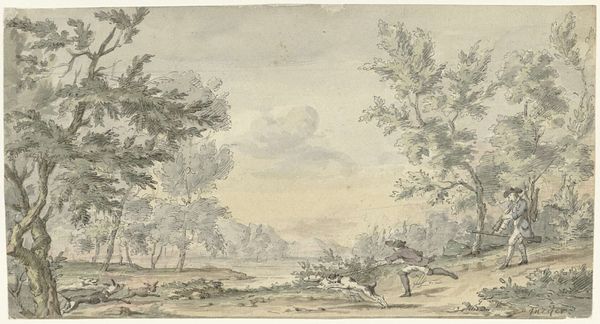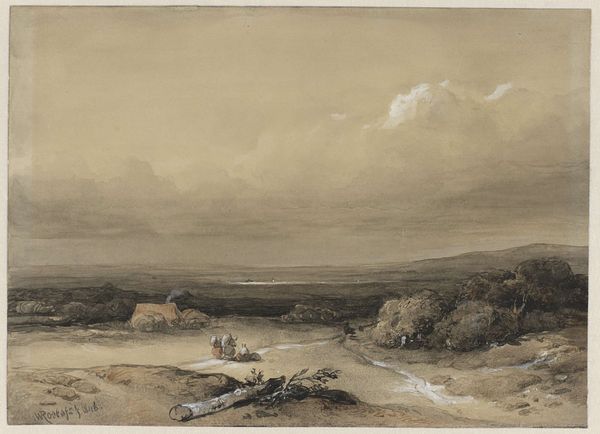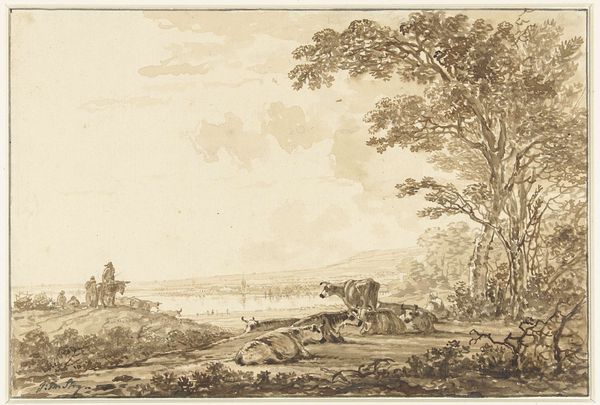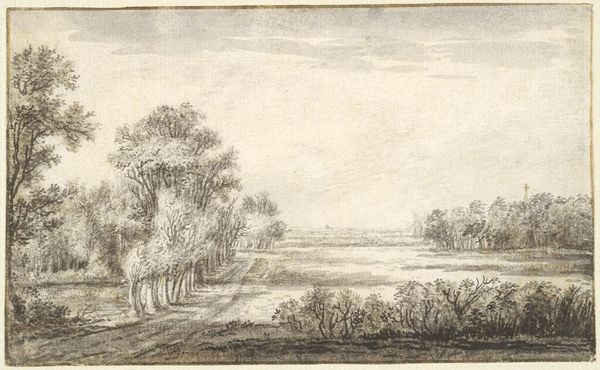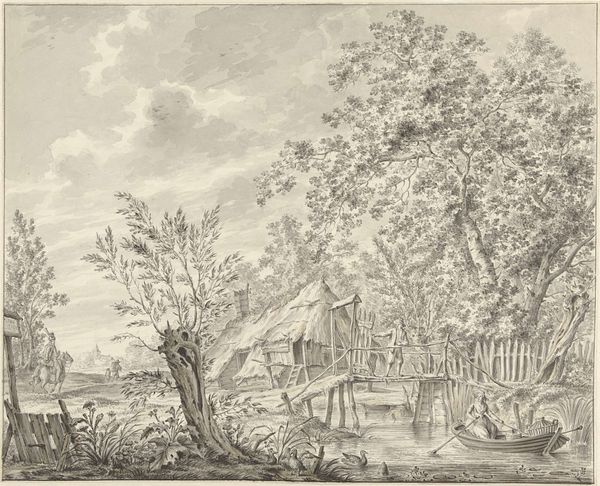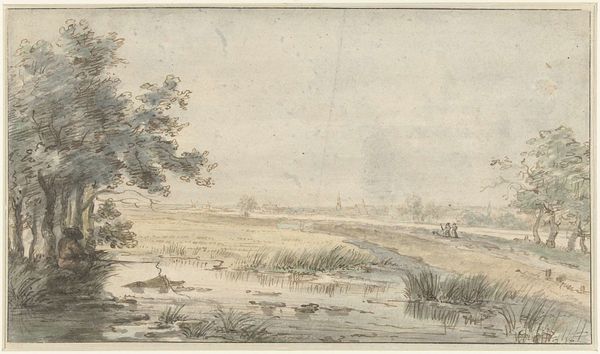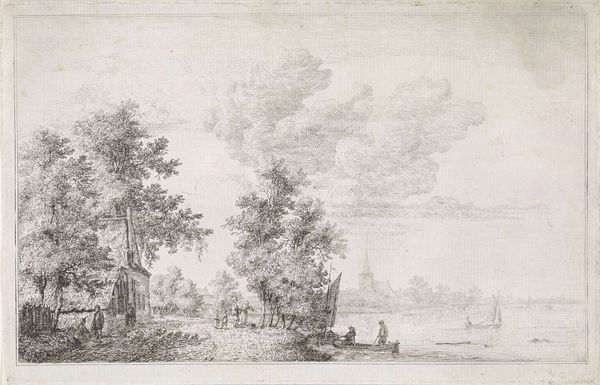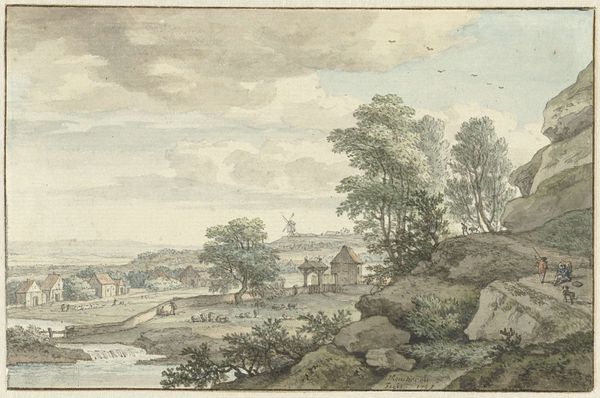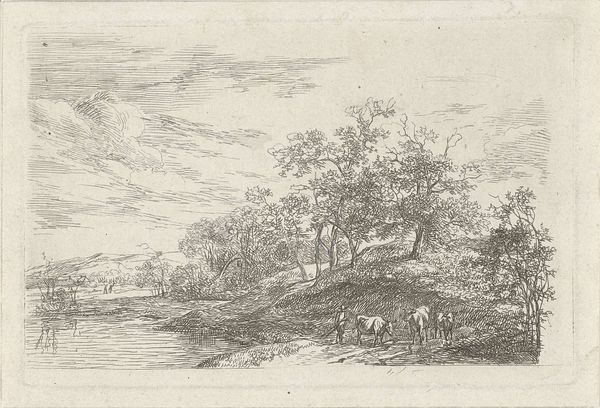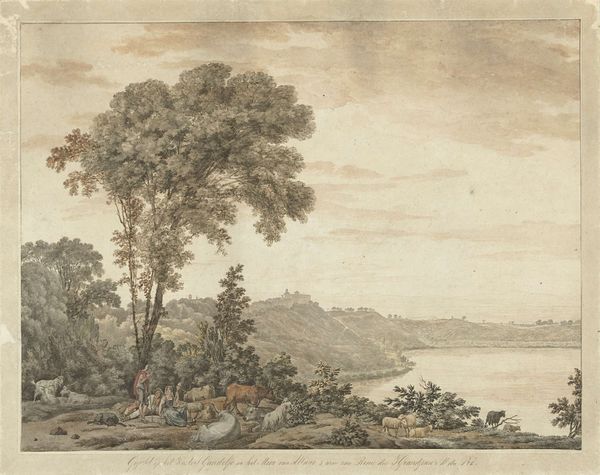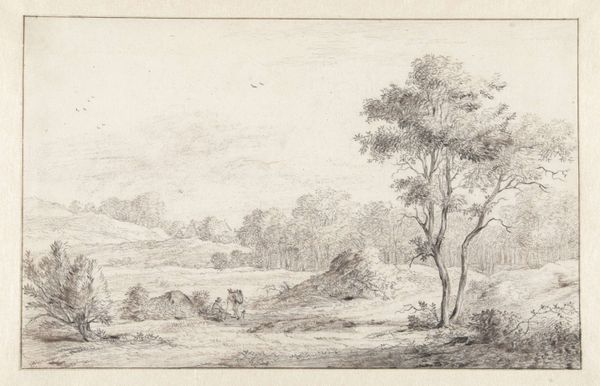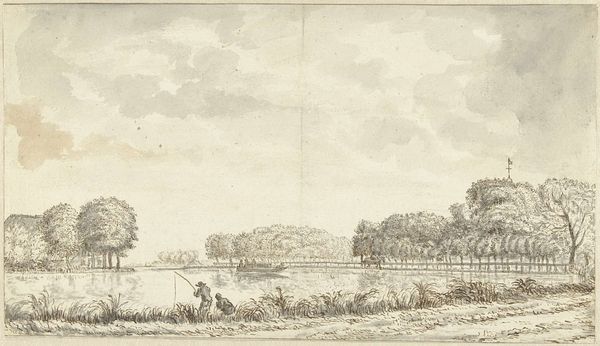
painting, watercolor
#
dutch-golden-age
#
painting
#
landscape
#
watercolor
#
watercolour illustration
#
genre-painting
#
watercolor
Dimensions: height 184 mm, width 281 mm
Copyright: Rijks Museum: Open Domain
Editor: Here we have Gerrit Grasdorp's "Landscape with a Winding River and Fishermen," created sometime between 1661 and 1693, done in watercolor. It's got this incredibly muted palette; it almost feels like a faded memory. What strikes you most about this scene? Curator: The faded quality, as you put it, speaks volumes. It's not merely the result of aging pigments. Grasdorp seems to be invoking a cultural memory, a yearning for simpler times, or perhaps reflecting on the ephemeral nature of human life set against the backdrop of the enduring landscape. Note the recurring motif of figures engaged in leisure – fishing, boating, perhaps hunting – each a small vignette within the larger pastoral tableau. Do you notice any patterns or relationships between these figures and the surrounding environment? Editor: I see the figures as pretty small, almost blending in with the scenery. Maybe they represent how humans are just one small part of nature. Curator: Precisely! And that integration is key. It's a conscious artistic choice to depict humanity not as dominating the landscape, but as embedded within it. Look at the river itself, winding and sinuous, a symbol of life's journey, connecting different points in space and time. How might the presence of water, a recurring symbol in art history, be functioning here? Editor: Well, water can mean a lot of things: purification, change, the unconscious... Maybe the river is all those things at once, a journey through life and a chance to reflect? Curator: Indeed. And consider the muted tonality. Is it merely aesthetic, or does it reflect a deeper cultural sensibility? Is Grasdorp perhaps hinting at a certain Dutch introspection, a valuing of humility and simplicity? Even the birds in flight, tiny specks against the vast sky, contribute to this sense of perspective. Each element whispers of something larger than itself. What do you make of how this subdued symbolic language informs the mood of the piece? Editor: It makes the scene feel very contemplative, even a bit melancholy. I see that nature can be a space to pause, to observe, and ultimately, to remember. Curator: I think that's beautifully put. And understanding the symbols that give a form and voice to our memories is an exercise we will never finish, but it forever deepens our humanity.
Comments
No comments
Be the first to comment and join the conversation on the ultimate creative platform.
